Formula 1 is the pinnacle of the motorsports on the planet. It is the most intense, most tech-intensive, strategy packed and the richest sport in the world. Important thing to understand here is that Formula 1 is not just about driving fast cars and securing the first position on grid out of all the competitors. There is a reason why it is called “Formula” One. All the cars and teams competing in this sport must abide to certain set of rules on car design, sporting conditions and (now) stringent budget restrictions. The cars are supposed to be “formulated” thus designed within certain rules defined by FIA (Fédération Internationale de l’Automobile as in International Automobile Federation) to ensure that no team gets an unfair advantage. Now with the technological advancements the complexity in this motorsport has touched new heights.
Here is an excerpt from Walter Koster – famous F1 Journalist in his world famous “short” interview question to explain the complexity and F1 drivers dealing with it –
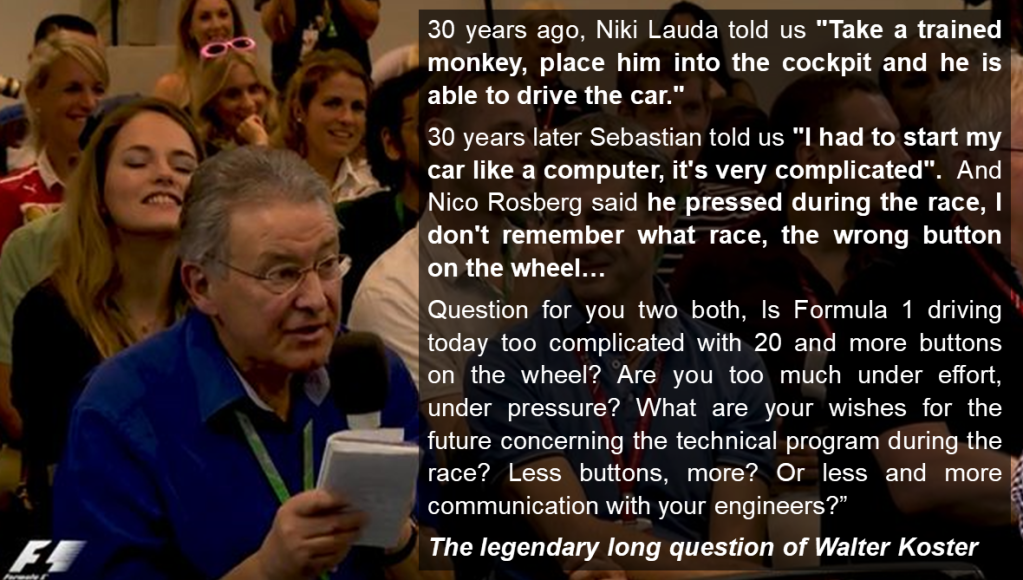
The question posed here is very important. Many of the innovations and technologies we see and use in our routine motor vehicles have emerged from the competitive motorsports like Formula 1. The technologies well known and common today like ABS (Anti-Lock or Anti-Skid Breaking System), Traction Control, Active Suspension, Advanced aerodynamics to improve the effectiveness and efficiency of power from power units, Hybrid power units, Incorporation of various sensors and using the data from such sensors to optimize the vehicles behavior are some of the notable examples. As newer and newer technologies are developing, F1 is getting more and more complex. Real F1 fans want exactly that in some sense. In this way the game is not only about racing on the circuit rather now it encompasses the initial car design, machine building, people management, policy management, finance and strategy on and off the racing circuit.
In this whole organized chaos what one must understand is the risks F1 driver faces while driving at such high speeds. One must understand that F1 cars are totally different from the cars that we use in our day-to-day life. The RPMs of F1 cars operate generally above 10000 RPM (for normal cars even the RPM of 2000- 4000 is really high), the highest speeds an F1 car can achieve is around 350 km/h to 390 km/h. The power rating of these F1 cars is around 1000 HP. The current engines used in an F1 car is 1.6L V6 engine. You must understand that a normal car with 1.6L engine has power rating of roughly 150 HP which is used in medium sized SUVs and family hatchbacks. The engineering marvel with which this high performance is extracted is one interesting topic in itself. With such machine and top speeds, for an F1 driver any moment missed during the blink of an eye can lead to a fatal injury, permanent disability and even instant death. F1 is also known for some serious injuries and fatalities. Hence, maintaining and improving the overall safety of everyone involved in the sports is important for FIA.
We will see one such simple yet effective design decision that FIA implemented in F1 which has saved many important and invaluable lives of the drivers in the recent times. That is the incorporation of Additional Frontal Protection (AFP) also known as Halo. It may sound exaggerated, but one can say that after the usage seat-belts, Halo is the second-best innovation which can be credited to immediately save many lives in F1 and its equivalent motorsports like F2, F3, IndyCar racing. It is also important to note that the incorporation of Halo was not an instant decision, rather FIA has always evolved and taken many decisions in improving the safety of the drivers in F1. Detachable headrest and padding and HANS are two notable decisions of them.
Formula 1 and Safety
If one looks back at the incident histories in F1, they will immediately realize that instant dangers are deeply rooted in the sports format itself. Ayrton Senna – 3 times world champion known as the greatest F1 driver in the history died from an accident in 1994 which triggered many safety decisions in F1. Senna’s Williams F1 car crashed into the concrete barrier at the speed of 304 km/h at Tamburello Corner of the Autodromo Internazionale Enzo e Dino Ferrari in Imola, Italy. The lateral crash resulted in severe injuries and complete disfigurement of the car in crash. Stricter standards for helmets, changes in circuits to eliminate dangerous corners/ turns, changes in the circuit barriers, stringent impact tests with stringent tolerances, speed limits in the pit lanes and practice sessions were incorporated after this incident.
The story does not end here. In order to improve the safety further, in 1995 lateral crash tests were incorporated, by 1999 high cockpit heights to save the head injuries and wheel tethers to avoid the lose wheels flying off in crash were incorporated. By 2003, Head And Neck Support (HANS) device was made mandatory. Senna’s accident completely changed the safety regulations in F1 and this can also be seen in the reduced number of serious and major accidents in those times.
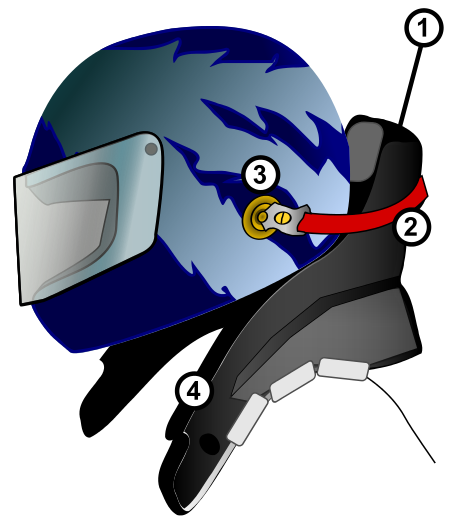
Need for Halo
In 2014, one incident shook the whole motorsport world. Jules Bianchi – an emerging F1 driver lost the control of his Marussia F1 car on Suzuka Circuit during 2014 Japanese Grand Prix. Due to unfavorable weather conditions – heavy rainfall his car lost grip and he crashed into a recovery vehicle which was trying to recover another crashed F1 car. Jules went into coma after suffering a diffused axonal injury and could not win the fight with death. After Senna’s loss in 1994 the world shook to the core with the loss of a young driver in 2014. The incident investigation demanded various changes in whole system and FIA realized the need for a closed cockpit-like solution to save the lives of drivers from frontal collisions.
FIA evaluated a closed canopy design like fighter jets and some tests were already ongoing in 2011-12. But the closed canopy had some practical limitations which prevented their immediate implementation in the F1 cars.
Limitations of the Closed Canopy-
- One can accept that the closed canopy will prevent the direct contact of projectiles from front on the drivers. The closed canopy will also relatively interfere less with the aerodynamics of the car. But when there will be need of instant extraction of driver during crash or internal fire, the canopy will increase the extraction time and would make the job of fire/ emergency marshals more difficult. According to the standards, driver should be extracted from the car within 7 seconds.
- An F1 car is just a machine, a wild animal with humongous power. Human controller brings that discipline, that life into such beastly machine. Driving in such extreme machine tests the human limits of the driver. The closed cockpit would limit all the airflow through the driver thereby making him more uncomfortable which would further increase the probability of incidents.
Closed canopy was tested in IndyCar designs with the help of Red Bull designers and engineers. The issue with the extraction was solved by keeping the canopy open from the top. But that does not address the issue fully. Even after keeping the canopy open from the top the airflow would anyways will be restricted to the driver. This issue was solved by nostril design of the canopy. Air intake gaps on the canopy’s leading edge would allow air inlet for the driver. Even some dedicated air channels were designed through the driver’s helmet to allow the airflow to ventilate driver sufficiently. IndyCar adopted these designs at first and there was still a long way for F1 to adopt these changes in their format.
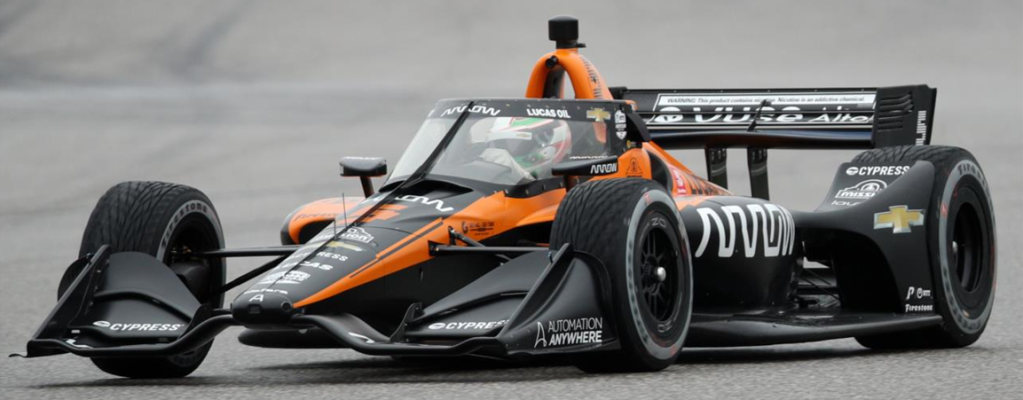
Problems and Challenges
The closed cockpit design faced big resistance in F1 due to some really obvious reasons. You cannot completely have a fully closed cockpit for immediate extraction of driver from cockpit. If one goes for top open i.e., aeroscreen cockpit, driver ventilation is one issue.
When dedicated ventilation is incorporated it will add extra weight and devices/instrumentation on car. Please note that F1 car designers are accounting for single gram of the extra weight of the vehicle. It is very common to go for the fastest lap attempt in the last lap of F1 racing only for the reason that the car bears lowest fuel weight and thereby lowest overall weight in the last laps providing more horsepower per gram to the car (now the cars are fueled only once in the whole race).
One more and the most important problem with the aeroscreen is the interference it would create in the aerodynamics of the car. The air intake of the F1 car engine just lies to the back and over the head of the driver. The aeroscreen canopy would not only affect and reduce the air input to the engine but it would also create the “dirty air” which results in the net performance reduction in the car.
To understand this, one should know that F1 car is not just about putting a high power unit in the low weight carbon composite car. When a car is running on the track with high speeds the air resistance is significantly higher, the car is literally punching a hole through the air. The car cutting through such high speeds bears the ability to literally get lifted and fly in the air with the same principle the an airplane takes off. According to Bernoulli’s principle if one creates net difference in the velocities of a fluid over a body it results in net pressure difference over the body. When this pressure difference becomes significant enough with the weight of the body it can provide lift to the body, it will cause the body to fly. As airplanes are designed to fly up, the F1 cars are designed to not fly up and remain glued to the track. This is done by creating down-force in the car. Simply put, its like rotating the wing of an airplane upside down to keep it glued down to the track instead of lifting up. More the down-force, more the car will remain glued to the track, more traction it will have which will make high speed turns on the cars possible. But down-force generation also comes with one design challenge called drag. When a continuous, uniform airflow is traveling over the car imparting net down-force the moment this steady-like airflow gets detached from the surface of the car it gets disturbed, turbulent air containing relatively high velocity loops of air or “eddies” are generated. This air turbulence is known as “the dirty air” in F1. Due to this, the air velocities at the back of the car become higher than the air velocities to the front of the car which creates net pressure difference thereby net low pressure zones are created behind the car. The car experiences a resisting force called “drag” which reduces the speed of the car. So, design of a good performing F1 car is always about finding that sweet spot of balance between down-force, drag and lift.
Now back to the cockpit design. The fully closed cockpit design ensures streamlined airflow over the car but it also compromises the extraction of the driver in emergency. If one puts aeroscreen cockpit in the car, the streamline passing over the would be disturbed before it even exits the overall car’s body. It will create a “wake” of air which will not be dense, streamlined thereby adding the drag to the car. It will reduce the speed of the car substantially. Please note that the differences of speeds and lap times in F1 are really close to the 10th of a second.
The biggest problem with incorporation of cockpits was related to the chaos in the aerodynamics of an F1 car which is one of the only things F1 teams can have larger overall control on.
If such design standards are related to safety, then they are supposed to be mandatory to every team which would reduce the net speeds of all F1 cars thereby removing the thrill of the game, the soul of the sports. Hence everyone opposed this idea of open canopy cockpit – aeroscreen design.
The Emergence of Halo
After the tragic death of Jules Bianchi in 2014 FIA realized that the front-end protection is also important aspect to improve the overall safety in the motorsport. As FIA were already in the process of frontal protection from 2011-12 testing fighter jet level closed canopies, it became apparent that some immediate and more practical solution is required for the F1 cars. This resulted in the design of Halo.
A halo also known as additional frontal protection (AFP) is a hoop made from aerospace grade Titanium alloy – Grade 5 Titanium (an alloy of titanium with aluminum and vanadium) with has 3 joints to enable connection to the car. It was designed by Mercedes.
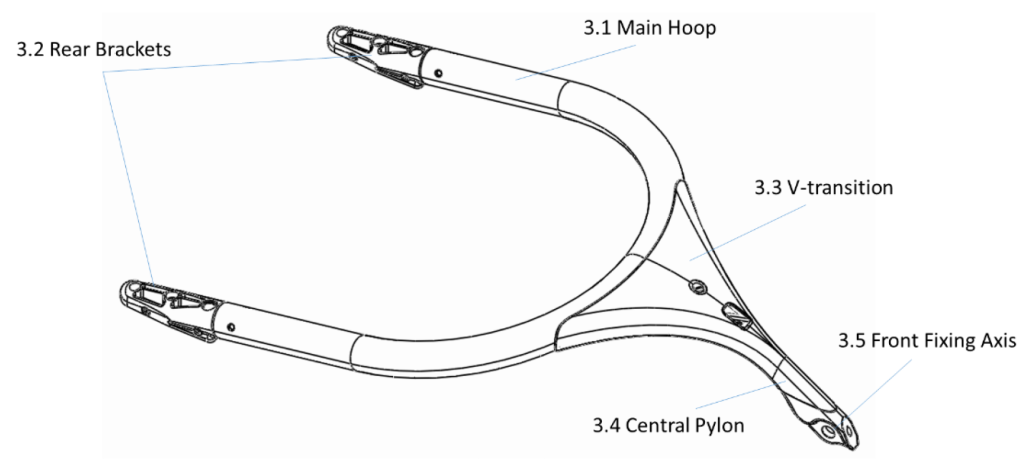
The halo weighs just 7 kg but can handle the loads of 12000-15000 kg (yes, those are 12-15 tons). Precisely speaking, according to FIA standard 8869-2018, a halo is made up of Ti6Al4V Grade 5 alloy weighing 7.0kg, +0.05kg, -0.15kg and should withstand quasi-static (simply put – slow and steady enough to seem unnoticeable movement) load of at least 125 kN with deflection less that 17.5 mm in Test 1 and deflection less that 45 mm in Test 2. (125 kN = 12.7464 metric ton, average weight of a Double-Decker bus). You have to understand that its not just about the integrity of the structure of halo. When halo is attached to the F1 car, the car chassis should also be able the withstand such loads transferred from the halo. Otherwise only halo would withstand the impact but the whole chassis may fail, resulting in many complicated failures, damage, injuries even fatality.
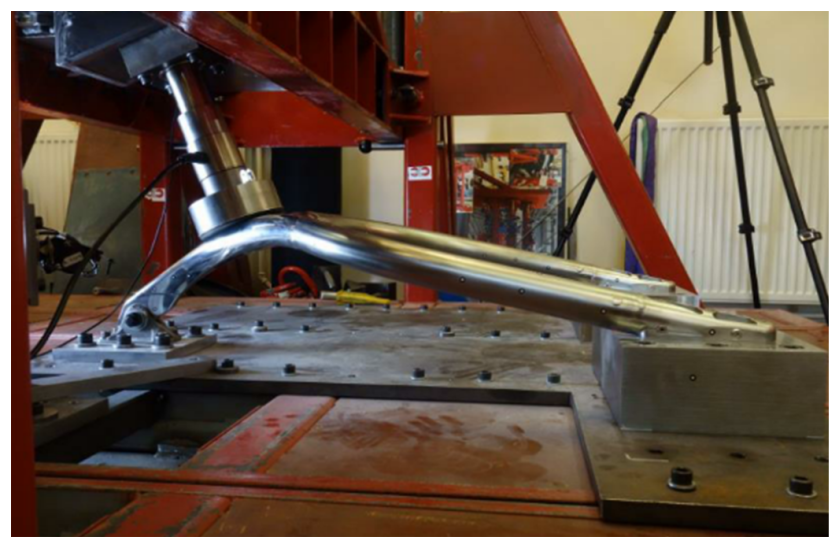
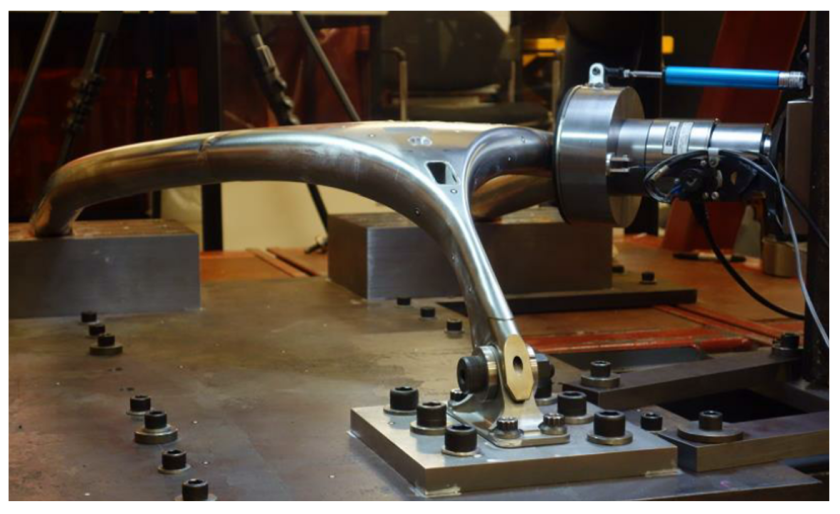
Halo is a standard supply part meaning that everyone must have the same part in their car obtained from the FIA certified and approved manufacturer. No modification is allowed on halo.

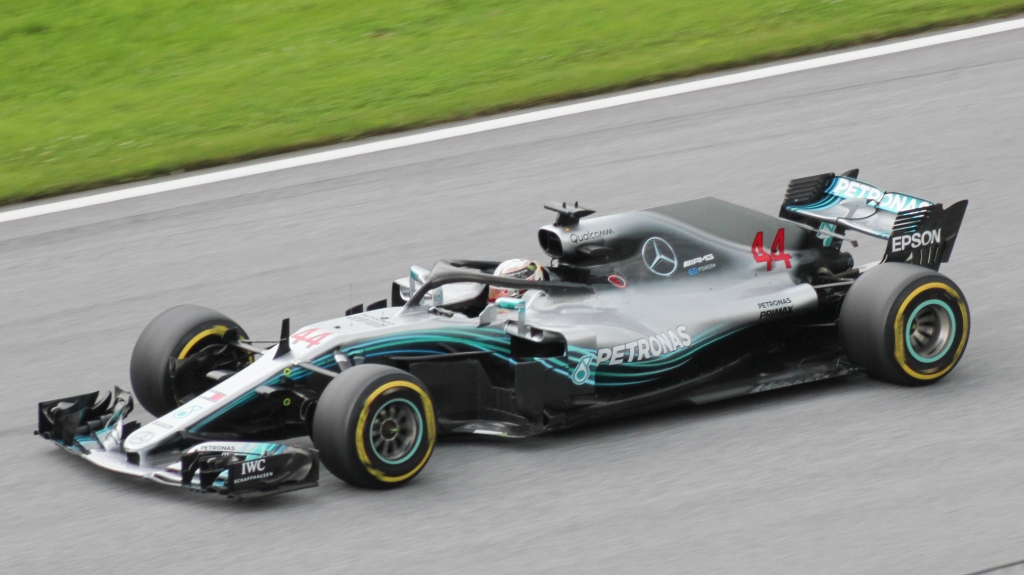
Challenges with Halo
The biggest outburst from F1 fans, F1 teams, F1 designers/ engineers and even F1 drivers for halo was due the reason that it is the ugliest part of the F1 car. Many said that it destroys the whole look, beauty of the car.
Second and more practical reason to resist halo was the disturbance in the aerodynamics of the car. Though the disturbances in airflow are lesser than the canopy it still meddles with the performance of the car in total. The top hoop of the halo disturbs the airflow creating a wake of dirty air over the rear wing thereby increasing the drag on car and reduced speeds.
Drag Reduction System (DRS) became less effective due to incorporation of halo. DRS consists of a moving flap on the rear wing of the car which alters the airflow over the rear end of car thus when this flap is lifts up while the car is on straights the down-force thereby drag on car is reduced hence gaining the speed.
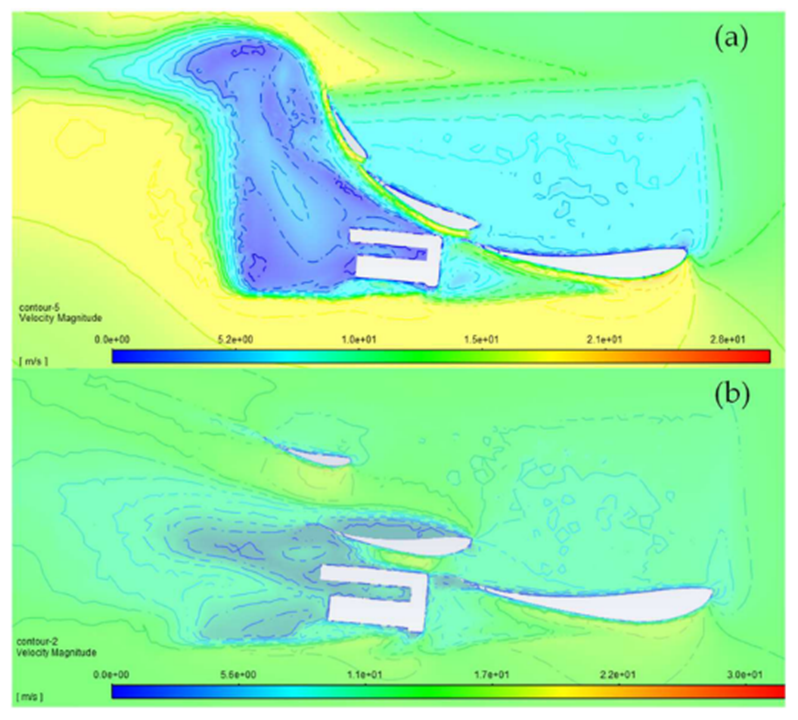
(Source- See reference 8)
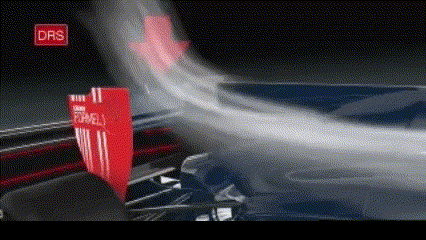
Now due to the incorporation of halo, the streamlined airflow which was expected to get extended over the rear wing of the car during the DRS was already getting disturbed thereby making the DRS less effective. (F1 fans know the madness and thrill of chase upon DRS activation on straights of the circuits)
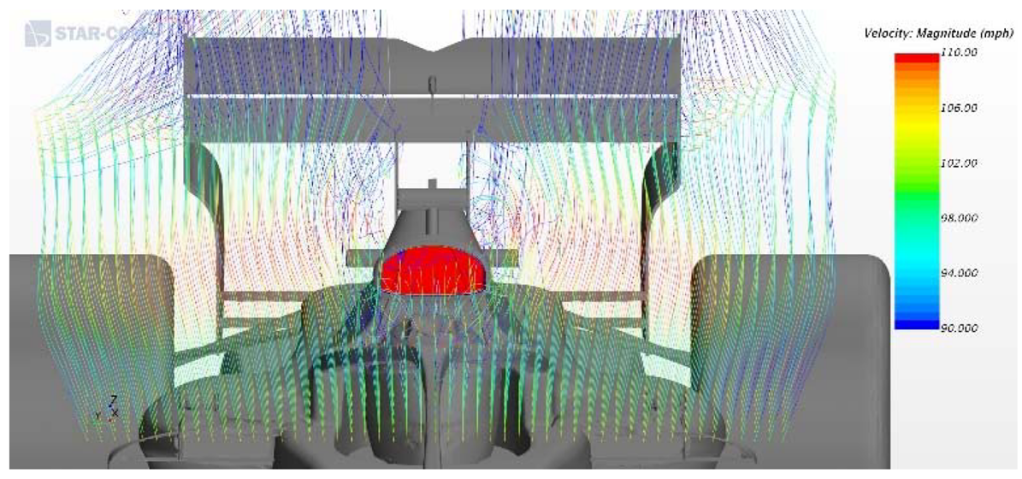
Third reason for resisting halo was the obstruction in the vision of an F1 driver. The central pylon of the halo connects just in front of the eyesight of the driver. Such immediate frontal obstruction in vision is big red alarm for everyone. The implementation of halo was tested in 2017 free practice session and every driver hated it as it was the immediate blockage in vision. Still the updated 2018 FIA standards mandated installation of halo.
One design to save them all
Despite the negative reception, halo has proved its effectiveness right from its year of implementation.
In 2018 Belgian Grand Prix on the circuit of Spa. Fernando Alonso’s McLaren car rolled over Charles Leclerc’s Sauber F1 car. The possible direct impact of rear tire and read wing would have caused permanent neck damage or possible death to Charles but it didn’t happen due to the protection from halo. According the simulations from the data of the accelerometers and other sensors from the cars, the impact force was of 56 kN (5.7 ton of weight)
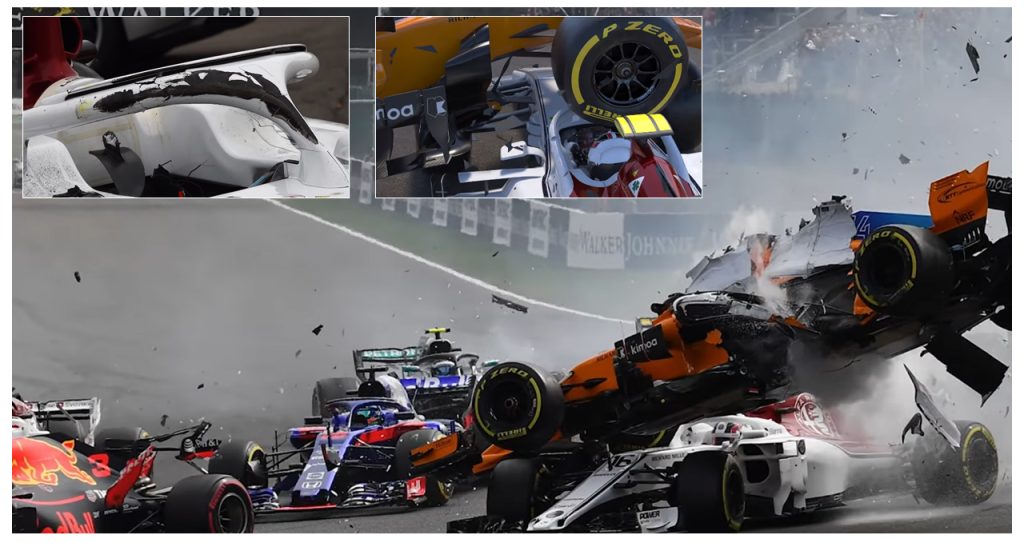
In the same year in an F2 race in Catalunya, Spain Tadasuke Makino’s life was saved during the accidental crash landing of rival car.
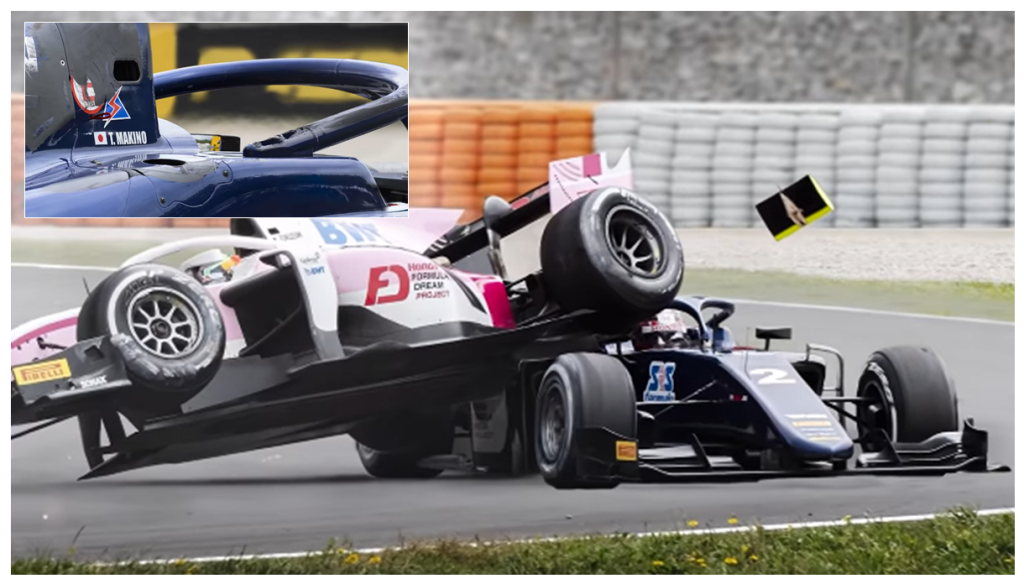
In 2019, F3 race in Monza, Italy Alex Peroni’s car went airborne, flipped in the air, rotated thrice and car landed upside down on his head. If it was not for halo, Alex would have been dead, the impact was directly on his head if halo wouldn’t have provided the barrier.
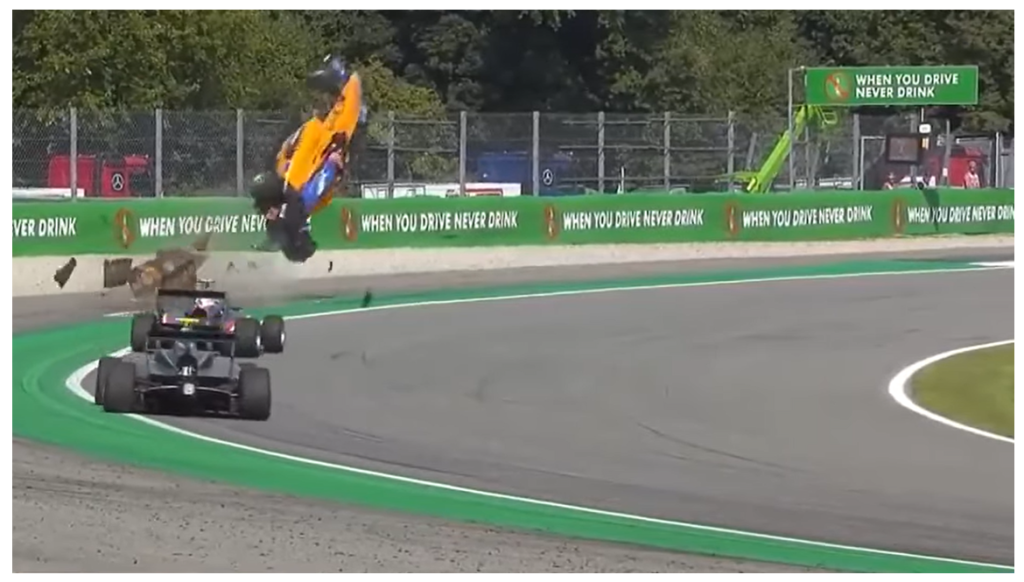
In 2020, Romain Grosjean driving Haas F1 car directly crashed into the barrier in Bahrain Grand Prix. The crash was so dangerous that it split the car in two pieces which was nearly impossible for a modern Formula 1 car. The collision was head on from the front end of the car. Romain experience 53 G force when he crashed through the barrier at the speed of 250 km/h. The halo protected his head from such intense front collision. People called it a miracle of god but it was one safety decision evolved from simple yet effective engineering solution which saved a man’s invaluable life from an unimaginable incident.
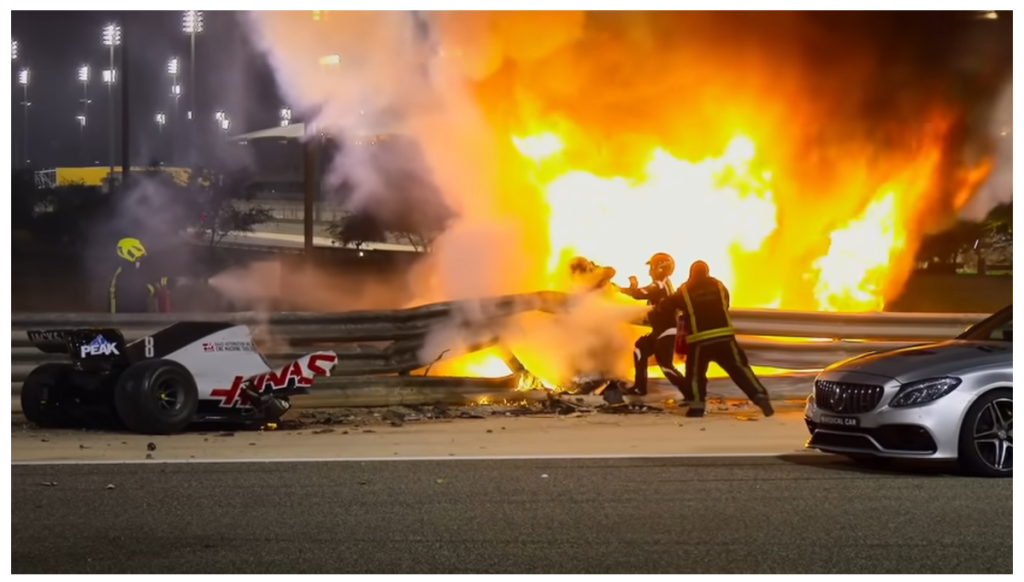
In 2021, Max Verstappen’s Red Bull F1 car crash landed over Lewis Hamilton’s Mercedes F1 car. The Red Bull car’s rear tire (or tyre) literally traveled over Lewis’s head. The halo prevented this direct contact otherwise it was definitely for 7 times world champion’s neck and life.

In 2021, in W Series qualifying session at Spa, Belgium a really weird accident caused 6 cars to pile up within few seconds. In this multiple collision pile up the halo of Sarah Moore’s car deflected a flying wheel saving her life from instant impact. In the same incident Beitske Visser’s car landed on the halo upside down which saved her life. Belen Garcia was also saved from frontal impact in this crash.
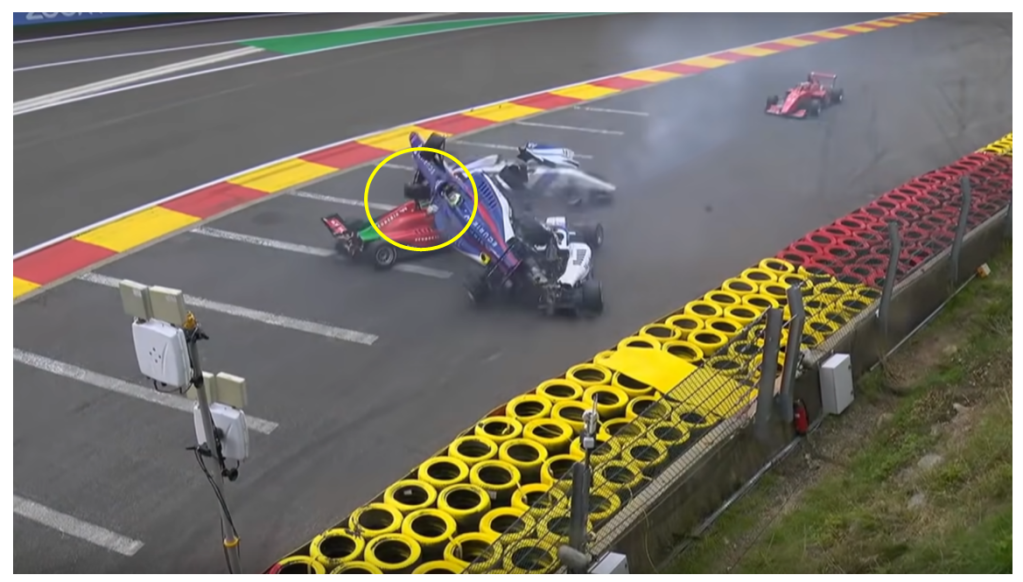
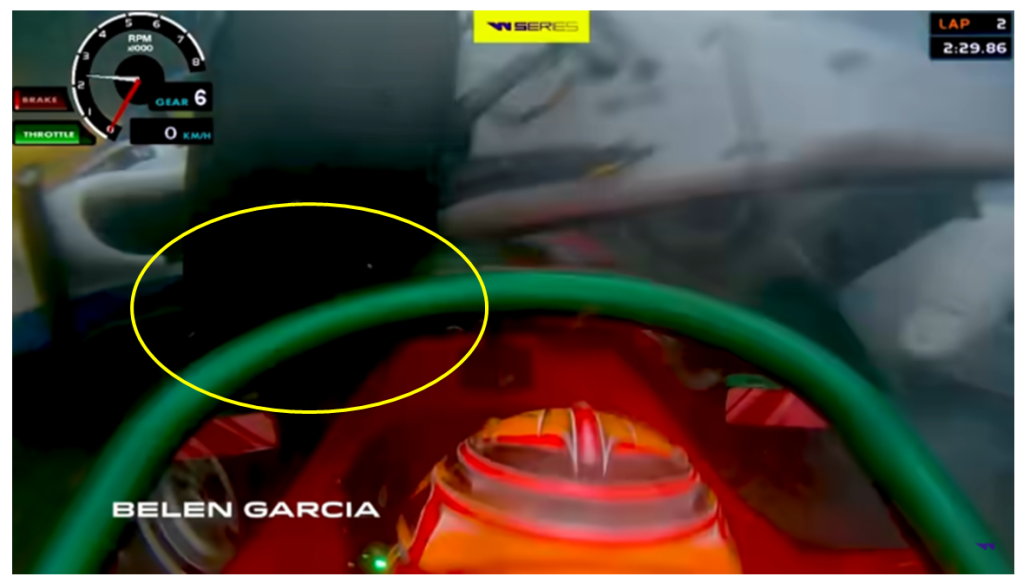
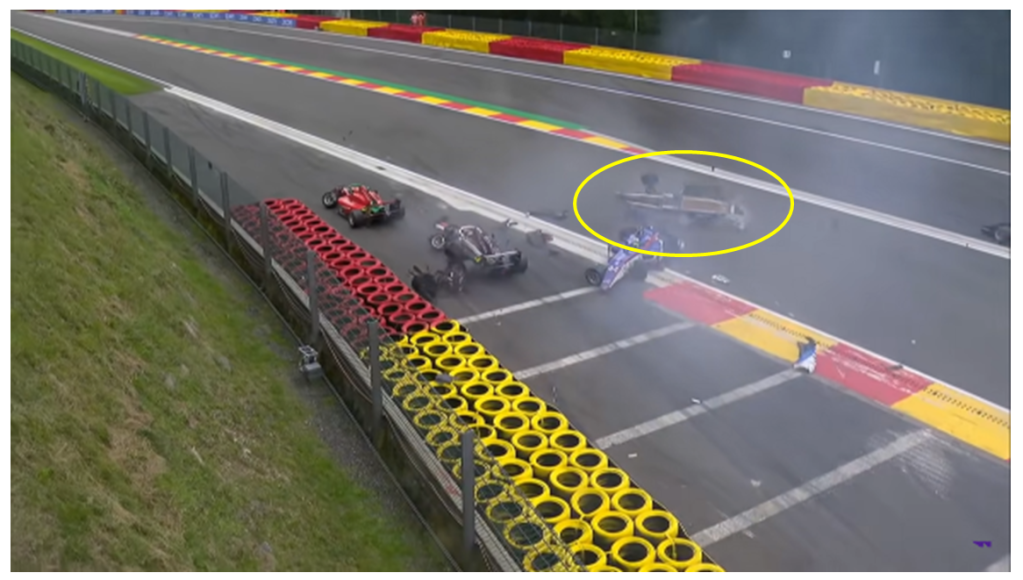
In 2022, British F2 race in Silverstone the car of Denis Haugher’s car went airborne, just like a vehicle jumping off a ramp on a corner and it went cross through the car of Roy Nissany’s head. The halo experienced side impact and only because of the implementation of halo Roy Nissany was saved from literal decapitation. It was a great save only due to halo.

In 2022, British Grand Prix at Silverstone, in the start and the first corner of the first lap Pierre Gasly’s Alfa Tauri F1 Car touched George Russel’s Mercedes F1 car on rear which resulted in his crash with Zhou Guanyu’s Alfa Romeo F1 car. The crash caused the Zhou’s car to flip upside down and in the same orientation the car went off track skidding only on the support of the halo over the gravel till the barriers. Zhou did not suffer any injury and was safe in all this accident, as if nothing happened.
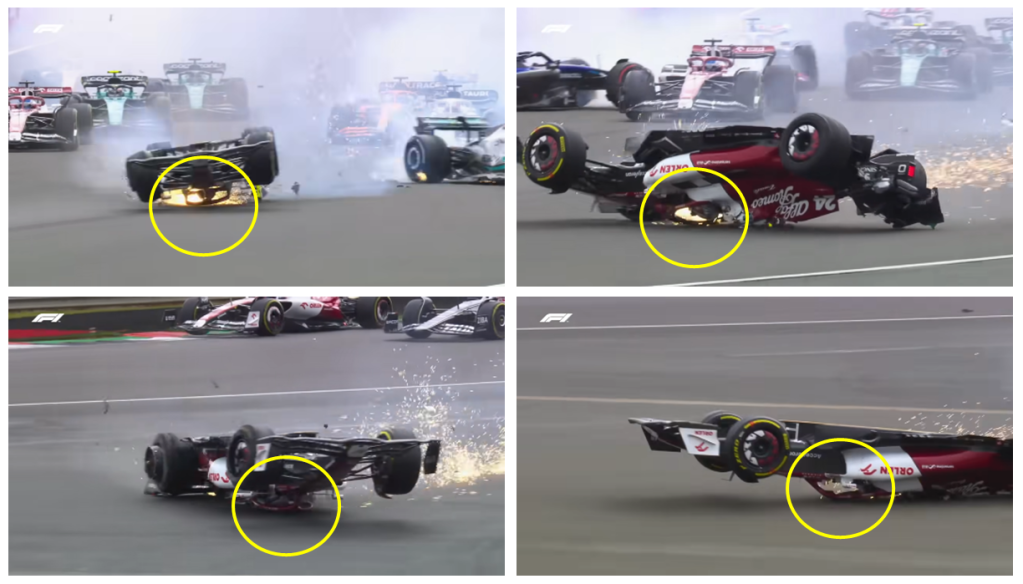
Are design decisions all about aesthetics?
Here are some highlights of halo-
Halo solved most of the problems related to the closed canopy and aeroscreen.
There is no moving part in halo thereby eliminating the unpredictable failures in extreme cases.
The problem of visual obstruction was more related to the development of habit in drivers. We can see our own nose with our own eyes (which is relatively easy to check for people with big and pointy nose) when we make a conscious attempt to see it. Our brain is normally ignoring our nose in routine vision. When you hold a pencil in front of your face and close, if you try to focus on distant objects the eyes can see what there is behind the pencil too. As if the pencil doesn’t exist. In the same sense drivers became comfortable with halo’s obstruction after some learning curve.
Regarding the aerodynamics, FIA is always in development to establish new design standards to maintain competitiveness in the sports. FIA in 2022 established some design changes to enable close chases between cars. Air fairing is allowed over halo, so teams have found out the ways to minimize the dirty air created due to halo.
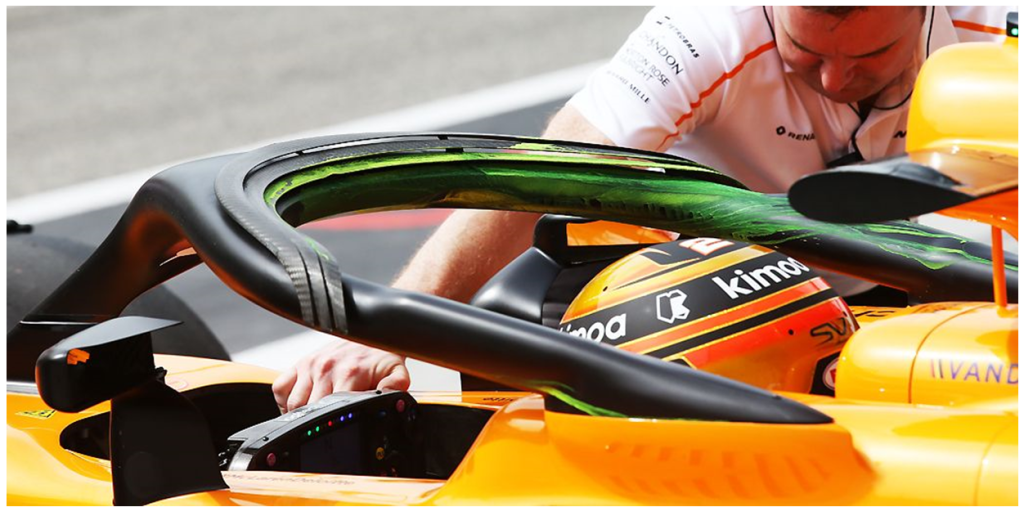
The implementation of halo was one of the most resisted decisions of the famous and important motorsport like F1. The reasons behind halo’s rejection seemed fair until it proved its effectiveness. Halo saved at least 10 lives in three years immediately. FIA simulation analysis predicted that there would be 1 incident in 1 – 2 years where halo will play key role. After such incidents in series, it became clear that halo is the life saver.
The major backlash for halo was for the reason that it would mess with the aesthetics of the F1 cars. F1 cars are known for their slick aesthetics. But there is more to it. The slickness, sophistication in an F1 car is not just about its design looks or its visual beauty it is also about the functional design. For a design to become perfect, there should always be some intent for certain part to remain there. The implementation of halo and the developments that resulted it show us some really interesting ideas about what a design should be. Development of halo also shows that the process to design a simple yet effective engineering piece is really complex, rigorous, thoughtful, precise and continuously evolving process.
The story of evolution of halo in F1 tells us about the minimalist and functional design for safety. Not even single part of halo is in excess, unnecessary or unwanted. The designers and engineers deserve special recognition for saving important lives and maintain the spirit of the sport. Maybe halo is truly the best design and safety decision after the design of seat belt. And there will always be scope for evolution and improvements. Given that the simplest, most effective design of halo is to stay forever in motorsports like F1, whatever comes after halo will be and has to be groundbreaking.

The precious lives that halo saved:

Starting from left – Charles Leclerc, Tadasuke Makino, Alex Peroni, Romain Grosjean, Lewis Hamilton, Sarah Moore, Beitske Visser, Belen Garcia, Roy Nissany, Zhou Guanyu.
References and further reading:
- Ferdinand Porsche
- FIA Standard 8869-2018 SINGLE-SEATER ADDITIONAL FRONTAL PROTECTION – HALO
- 2018 FORMULA ONE TECHNICAL REGULATIONS
- 2023 FORMULA ONE TECHNICAL REGULATIONS
- Technical F 1 Dictionary
- A Critical Review of the ‘Halo’ Device in Formula One by Charmian Monroe – Oxford Brookes University
- Effect of Halo Protection Device on the Aerodynamic Performance of Formula Racecar by Mark Lin, Periklis Papadopoulos, International Journal of Mechanical and Mechatronics Engineering Vol:14, No:1, 2020
- Aerodynamic Study of a Drag Reduction System and Its Actuation System for a Formula Student Competition Car, Loução, R.; Duarte, G.O.; Mendes, M.J.G.C., Fluids, 2022, 7, 309. https://doi.org/10.3390/fluids7090309
- Crash images from telecasts of F1, F2, F3 and W series

